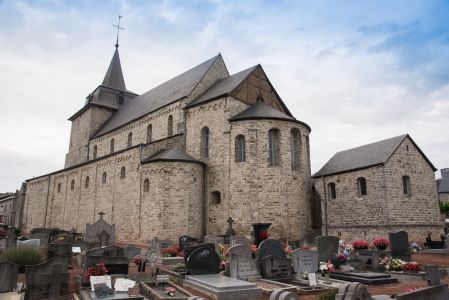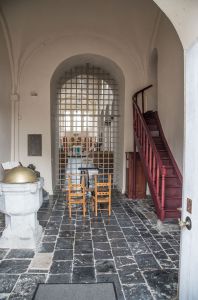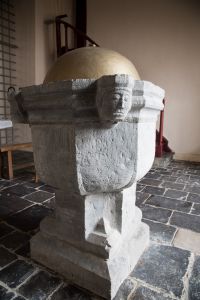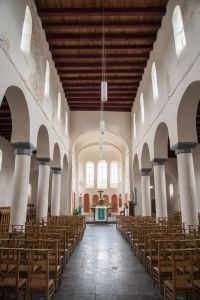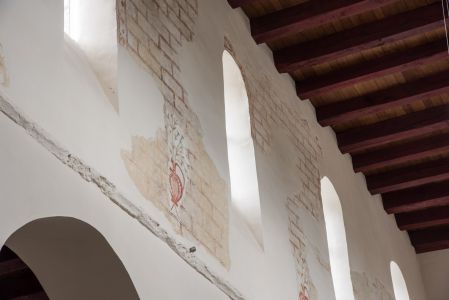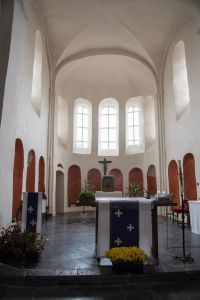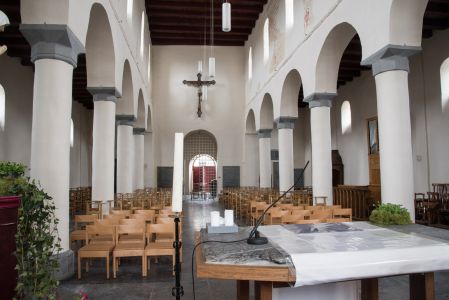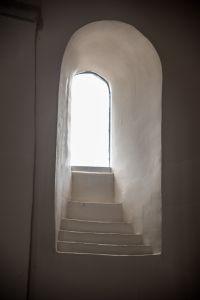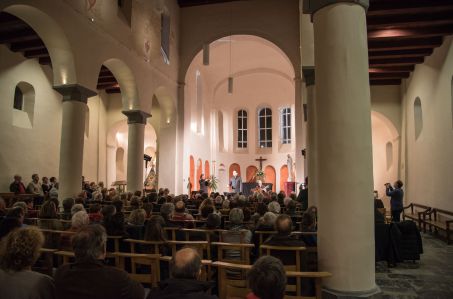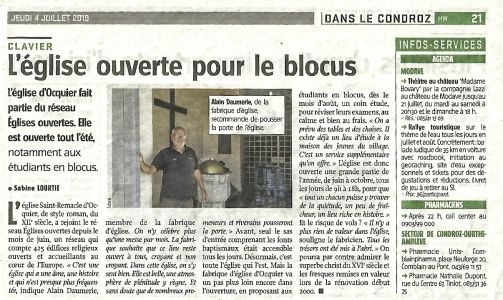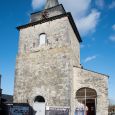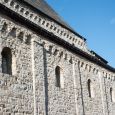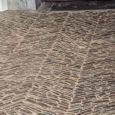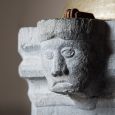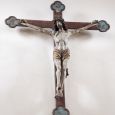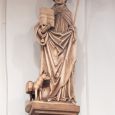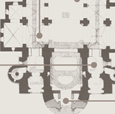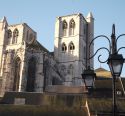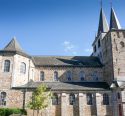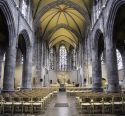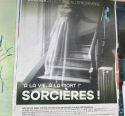Church | XII | Romanesque | Catholic Church


Map
Opening hours
01 June - 30 September
Mon 11.00 - 18.00
Tue 11.00 - 18.00
Wed 11.00 - 18.00
Thu 11.00 - 18.00
Fri 11.00 - 18.00
Sat 11.00 - 18.00
Sun 11.00 - 18.00
Religious offices
Description
The visitor is struck, from the outside, by the proportions of the church, characteristic of the early Romanesque period, with its massive bell tower, small windows and masonry punctuated by fine pilasters. Just under the roof, a border of small adjoining arches creates a harmonious play of shadows, in the Lombardy style.
As in the past, the interior walls were coated with white, so that the sun's rays would reflect their light. Painted motifs were to decorate the surface, such as those still visible at height (more recent). The flat wooden ceiling and columns date from the 16th century, as do the Christ on the Cross and the baptismal font.
The choir of the church, a little stocky in its simplicity, was only pierced with large bays in the 18th century. Its ochre-coated niches with irregular contours give it a particular atmosphere.
The building has a beautiful acoustics - highlighted during one of the Rencontres Eglises Ouvertes (Open Churches Meetings). It regularly hosts concerts.
KIKIRPA : Photo-library online
Photos
Remarkable elements
Bell tower
As suggested by its mass, the thickness of its walls and the loopholes on its sides, the church tower was designed from the beginning to shelter the inhabitants of the village in the event of a raid. Its entrance gate and upper part are more recent. Rebuilt after a storm in 1617, its structure has a beam engraved with a vintage that has long been read "1017" (the 6 being easy to confuse with a 0).
.
Lombard strips of the facades
The decorative motif that adorns the masonry of the church is characteristic of the first Romanesque buildings: a succession of pilasters in low relief, connected in height by a frieze of arcatures (semicircles). A stylistic "signature" that historians associate with the masons of Lombardy (in northern Italy) who spread Romanesque art to our regions from the reign of Charlemagne.
Pavement of the side porch
The right lateral access to the church, now closed by a gate, is paved with numerous stones juxtaposed "of edge" (i.e. vertically, so that only their edges appear). Their chevron alignment gives a beautiful dynamic to the whole. This is a know-how that has almost disappeared nowadays....
Gothic baptismal font
Sculpted in the 16th century, this octagonal tank rests on a heavy square base. The four naive faces that decorate the corners, strangely overwhelmed, traditionally represent the four cardinal points and the four rivers of paradise. In the past, baptismal fountains (from Latin ‘fon’s, fountain or spring) were always located at the entrance of churches, as unbaptized people could not access the center of the building.
Christ on the Cross
This representation of Jesus crucified impresses by its particularly expressive model. A style that evokes Master Balthazar’s, well known in the region in the 16th century. The face of the tormented person appears peaceful, in contrast to the tension of his protruding muscles. The skull and cross at the foot of the cross, which reminds us that the crucifixion took place on Golgotha hill ("skull" in Hebrew).
Statue of Saint Remacle
This effigy of the holy founder of Stavelot Abbey (on which the village of Ocquier depended in the early Middle Ages) is a recent work of bare wood. The original statue, unfortunately stolen, was one of the most beautiful of Master Balthazar (1520-1530). We can recognize the abbot's crook and, at his feet, the wolf loaded with stones that the saint had miraculously erected to help him build his monastery.




